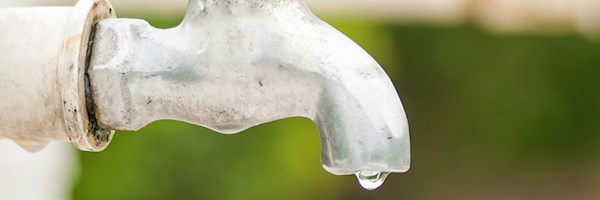More water is used in the kitchen than anywhere else in the home, so it’s a good place to start applying conservation measures . Here's how to make every drop count.
Like the becalmed sailors in The Rime of the Ancient Mariner, we could all soon find ourselves looking at ‘Water, water, every where, Nor any drop to drink’ as potable water becomes increasingly scarce. Although 70% of the earth’s surface is covered by water, less than 1% of the trillions of litres in, on and around the planet is drinkable – and the supply is dwindling. Already, according to the UN, one person in eight does not have access to usable water, and more than 3,5 million people die every year from water sanitation diseases. Consequently, conserving water should be a green priority for every household – starting not with the garden or bathroom, but with the kitchen, which actually accounts for the bulk of water usage in most homes.
And it’s not difficult. You can cut your water usage significantly by just changing a few everyday habits, such as not letting the tap run when you’re washing fruit or veggies, and not using running warm water to defrost frozen food. Wash the produce in a plastic bowl, defrost the food overnight in the fridge and keep a jug or bottle of iced water in there too, instead of letting the tap run in summer until the water gets cold enough to drink.
The next step is to consider where your food comes from. Water is needed to produce everything we eat, but processed foods require much more, so locally grown, natural foods are a better – and healthier – option. Better still, grow your own and recycle your used kitchen or bath water into your veggie patch or pots. Also, rather than use water-hungry kitchen-sink disposal units, try composting, which will also help you nurture your food plants.
Another easy and inexpensive way to save water is to install and maintain aerators on your kitchen taps. These are small mesh screens that screw on and they reduce the flow of water through the taps, without reducing the water pressure, by mixing it with air.
Aerators can save you up to 50% of your water usage through taps, and estimates are that by installing them throughout the house, you can save up to 1 000 litres of water a month. They do, however, need cleaning from time to time to remove mineral deposits, or replacement if the mesh is broken.
If you use a dishwasher, you should make sure that it is an Energy Star-rated model – which will use at least one-third less water than older models, or only about 15 litres, per cycle.
Newer dishwashers also have a rinse cycle so you don’t need to hand rinse dishes under a running tap, and you can make further water savings by loading the dishwasher properly, running it only when you have a full load and using an efficient (and biofriendly) detergent that gets the dishes clean in one wash. Then to keep the dishwasher functioning at its best, clean out the drain grill frequently and run a bowl of white vinegar through once a month.
In many modern homes, the washing machine is also to be found in the kitchen – or perhaps the scullery – so you need to get to grips with the water-guzzling ways of this appliance, which will generally use between 40 litres and 100 litres per wash. It is best to run the machine only when you have a full load, unless you have a model that will do half loads with half the amount of water. You can also avoid having to wash heavily soiled clothing twice by pre-soaking it, and you should not use more detergent than necessary or you will probably have to re-rinse clothes to get the residue out.
Then finally, if you really want to embrace the green way, you should consider installing a rainwater tank and connecting it up to your kitchen plumbing. That way, you’ll be making good use of the free water that might otherwise just have been running off your roof and going to waste every time it rained.
